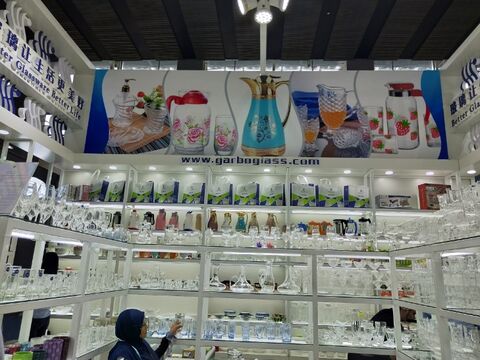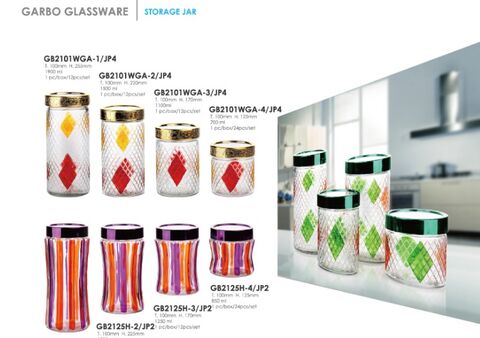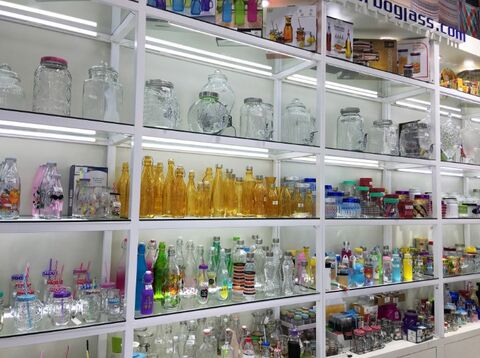7 steps for successful sales of glassware wholesalers
Pulished on Jan. 02, 2019The role of glassware wholesalers has changed a lot since then. Due to the complexity and multidimensionality of customer needs, glassware wholesalers must first be a knowledgeable consultant to provide glassware buyers. It is a consultative sales service. The current business behavior is not only a simple trading behavior, but also a matter related to corporate strategy, culture, etc., which requires business personnel to establish long-term partnership with customers. Today, driven by the buyer's market, all kinds of products and propaganda are filled with the nerves of everyone, so we must make our products or services stand out from the crowd so that we can stand out in the market competition and be recognized by customers. .
Marketing is a process of discovering and satisfying customer needs. If you want to do this effectively, you must first identify the customer's need to use your product or service. Demand is the desire to achieve or improve something, because there is a motivation to buy it. To achieve such a transaction, you must be familiar with the seven steps of successful sales, and apply the skills in each step to the promotion of the company's products and services; thus learning how to deal with customer objections and help customers achieve a win-win situation by learning face-to-face communication skills. Purchase decision.

First, master the knowledge of glassware
First you must understand your glassware, identify the characteristics, advantages and benefits of the main glassware in the industry and analyze the characteristics, advantages and benefits of the supplier's current products. Only with a wealth of knowledge of glassware can you gain a deeper understanding of the motivation of a customer to purchase a glassware or service. After understanding the motives, what kind of promotion methods, how to price, and how to refine the products can be solved.
The characteristics of glassware refer to the characteristics of the company's glassware or service; while the advantage of glassware refers to the description of the characteristics and its uniqueness in the market. The differentiation compared with similar glassware can often be used as a glass for a specific group of people. Advantages of the vessel; glassware benefits refer to the meaning of the feature to the customer and the benefits it can bring to the customer. If these benefits meet the customer's needs, the sales step is easier to continue.
Second, the development of glassware procurement new customers
Any business will inevitably lose the existing customers and must constantly develop new customers. At the same time, in order to expand market share, we also need to win customers from competitors, or when marketing a new glassware, we need to build new customers. Developing a new customer is a skill that a professional salesperson needs.
In general, there are several sources and channels of customer information that can be considered for developing new customers:
• Authoritative third party survey data
• Information published by the economic department
• Exhibitions or promotions
• Street sweeping visit
• Yellow Page
• Exchange information with other salespeople or peers
• Advertise
• Self-cultivation
Development customers need to consider how to get to meet customers, generally there are several ways to visit directly, letters, emails, and phone appointments. A successful sales visit should contain several basic elements:
• Purpose – A wise and mutually beneficial decision with the client is the ultimate goal of the sales visit;
• Mission – fully grasp the visit process to achieve the desired results at each stage;
• Prepare in advance – to get the job done, the preparation before entering the store and the preparation in the store are very important;
• Visitors – those who have a decision or influence on your product or service; or those who have funds and need.

Third, prologue
The ultimate goal of the prologueis to reach an agreement with the client on the matters discussed and reached by the visiting generals. A good opening statement is crucial to the conclusion of the transaction. Because the first impression has been decided half, and you can't come back. And to run a successful opening statement should pay attention to the following:
Ready to start
• Completion of customer background information survey, the so-called "knowing ourselves and knowing each other, not fighting."
• Ask yourself: The customer meets me, what purpose does he want to achieve? I met with the client and wanted to achieve something?
Lead to the opening statement:
- First of all, operate a comfortable atmosphere, such as chatting about the decoration in the store, today's weather, etc.;
--Talking about people you know together or topics of mutual interest to establish a rapport;
-- When both parties are ready to talk about business, turn topics back to business and meet purpose
How to tell the opening statement:
Propose an agenda - state the value of the agenda to the customer - ask whether to accept
Fourth, ask
Mastering skillful inquiries and correct feedback is a must-have skill for a business person.
A clear, complete and consensus understanding of the needs of our clients
-- Clear: What are the specific needs of customers? Why is this demand important to customers?
-- Complete: Understand all of your customers' needs and priorities to determine if you can meet and how to meet them.
-- There is a consensus: to communicate fully with customers to have the same understanding of things.
Need the need behind
Deep-seated needs are often the larger goals that customers want to achieve, such as financial, job performance, productivity, and image. But the needs behind these needs are often obtained through skillful inquiries.
How to ask
Open inquiry: Encourage customers to answer freely and learn more.
Limited inquiry: Limit the customer's response to "Yes" or "No" or choose among the answers you provide.
"Example: Using Open Enquiry" to gather information about customer situations and the environment:
--{What is your company's glassware marketing plan this year? }
--{Can you tell me how your sales of glassware are currently being sold? }
Discover problems
--{Why is the sales situation particularly bad in these months? }
--{What are the questions that your salesperson most often comes back to? }
Understand the impact level
-- {If the number of customers can not continue to expand, what will affect your business? }
--{If the business personnel need comprehensive training, how much manpower and material resources do they have to spend? }
Excavation needs
-- {What kind of products do you think can meet your needs? }
-- {In terms of this trend of business needs, how should we cooperate with you? }
Make sure you have a correct understanding of what the customer is saying
--{According to what I know now, our inventory problem is due to the original error, right? }
--{So the most important thing for your company now is to properly store customer information? }
Finally, determine each customer's needs.
Fifth, persuasion
By persuading customers to understand your products and companies, and in the specific way to meet the needs of his expression.
Timing of persuasion:
The customer indicates that one needs
You and your customers know exactly when they need it.
When you know that your product or company can solve the need
How to convince the need:
• Confirm the need
• Agree that the need should be addressed
• Raise and emphasize the need to be important to others
• Indicates the consequences of not meeting the need to be met
• Introduce relevant features and benefits
• Ask if you accept
Sixth Agreement
When the above steps are successfully completed, whether or not an agreement can be reached depends on your "single-footed" effort. Achieving consensus with the customer for the next step, a mutually beneficial decision is the ultimate goal of your visit to the customer.
The time to reach an agreement:
When the customer gives interest or purchase
The customer agrees to accept several benefits that you have introduced
How to reach an agreement:
Revisit several benefits that have been accepted before
Propose the next step content and matter for you and your customers
Ask if you accept
When the customer pretends to delay: ask and find out the real reason to solve it in a targeted manner
Suggest a smaller commitment
Try to set a date for the customer to make a decision or promise before then
If the customer says no: Thank you for taking the time to talk.
Ask the customer to respond
Ask the customer to keep in touch with you
Thank you for the order given by the customer.
Tracking visits
Explain the next process: such as the delivery date and method, location, etc.; related matters of collection; customer credit investigation and other issues that need to be reminded or coordinated.
When the customer does not care, doubt or refuse:
There are several reasons why customers don't care about your proposal:
If they are using a competitor's product [and are satisfied]; they do not know that they can improve the current situation and environment or they do not see the importance of improving the current situation and environment.
How to overcome the customer's care:
Express understanding of the customer's point of view
Request to allow you to ask
Propose a limited agenda for the opening remarks
State the value of the agenda to the customer
Ask if you accept
Use the inquiry to motivate the customer to perceive the need and let the customer notice that he can improve or achieve something
Use product benefits and understanding of the customer's situation and environment [especially for competitors' weaknesses] to identify possible opportunities and collect specific information to identify issues or situations that can be addressed by available company products.
Consider the potential impact of this opportunity on the customer's current or future, ask the customer's perceptions or feelings, and the consequences and effects of the discovered situation or problem.
Eliminate suspicion: suspected customers need to regain assurance
-- Express understanding of this concern: Let customers know that you understand and respect his point of view, but be careful not to let customers think that your product or company has problems
-- Give relevant evidence: prove that your product or company does have this feature or benefit
-- Ask if you accept

Seven, tracking visits
Planning and preparation before visiting:
Did not set a SMAC (to be specific, measurable, targeted) target, do not visit customers
Specific - to be accurate, to be meaningful to the customer
Measurable can be measured - there is quantity, value, time
What Achievable can do - feasible, relevant to the customer, may not be done right away, but it can be a continuous activity
Challenging is challenging – give yourself a higher demanding goal, not just to be satisfied with receiving an order.
Every visit should have a quantitative benefit that can be quantified to the customer.
Prepare every visit, leaving the documents and materials needed when leaving the customer.
Set a visit target:
The goal is to let you:
1. Have a clear and clear plan for the effect to be achieved
2, to ensure that every visit to the customer has a real purpose
3. Ability to incorporate the effectiveness of each visit into the sales target for each week or month
It is your responsibility to set a visit target because the customer is your responsibility. Of course you can discuss the content of the target with your supervisor or manager.
Preparing for a full visit and setting a SMAC goal will let you:
1. Be more confident and professional in front of customers, and easy to win customer confidence.
2. Fully and effectively utilize the time of each visit.
3. To meet the goal and face fewer difficulties and problems, because adequate preparation will reduce the objection of customers and get more job satisfaction.
Steps to visit the store:
1. Plan and Prepare - Re-examine your SMAC goals and proposals before entering the store. Check the items you need, such as samples, product brochures, company quotations, calculators, etc. and review your appearance.
2, introduction -
After entering the store, say hello to the owner or orderer or introduce yourself
Shake hands and smile
Performance and display with purpose
Ask if you can stock
Do it simple, don’t drag
3, in-store inspection
• Look at the inventory of goods, whether there is a backlog or need the company to stock up in time.
• Look at the price tag and whether it is sold at the price specified by the company.
• Check the status of the Merchandising and pay attention to the chances of tally. Whether the goods of your own company are placed in the best position, if possible, you can use the opportunity of tally to adjust your goods to a better position.
• View promotion/display cards, etc.
• Pay attention to competitors' activities, such as new product status: new model, packaging, pricing, start date of sale, promotion (promotion) activities, advertising, inventory. Competitor's promotional activities: record the location of promotional signs; quality, effects, etc.
4, check the inventory
Some customers will have multiple stores, and the goods are provided by the central warehouse. If you visit these stores, you must ensure that: There are goods on the shelves, there are enough goods to sell, and all the goods that are out of stock are recorded before the next delivery. , made when selling with the buyer.
On-shelf inventory: Check if the goods on the shelves are sufficient for the consumer and pay attention to what goods need to be added.
Warehouse inventory: Obtain consent to the warehouse number of goods, some customers' warehouses are not necessarily in the store, if so, you must return to the place where you can find the buyer to check the maximum inventory (related to the delivery period) after ordering. Check the temperature, the stacking situation, and which items are placed together.
5, calculate the order
6, review
This is the most important step. Before meeting the shop assistant, you should collect the information collected in the customer warehouse and the goods yard, and make the following preparations: check the SMAC goal, the content of the rehearsal, and the role simulation (think of possible objections, think about the agreement) , order skills, etc.).
7. Sales interviews - this is the time to get an order or other agreement.
8. Obtain an agreement: If you are prepared in advance, you will get an agreement.
9. Tally: After getting the agreement, you should start dealing with important tally things. The general tally is of course done in the inspection of the distribution. At this time, you should:
Completion of the tally change with the customer: increase the visibility of the display surface, reposition the goods, re-price, display products (Display)
Ensure the correct stock rotation
Put the goods on the shelves from the warehouse – don't let any goods in the store go out of stock
Place POP
Record what you know about the next visit.
By doing the above 7 points, the glassware manufacturer can sell the purchased products very well.









